Club Formation
The formation of Sunderland Rifle Club was the outcome of a towns meeting at the Town Hall on Thursday April 19th 1900 convened by Mr Geo Childs, the Secretary of the Conservative Association. The meeting was presided over by the Mayor, Ald. Dix, and was attended by many prominent townsmen.
Sir W. Theo Doxford was elected the first President of Sunderland Rifle Club and a strong committee was appointed to arrange the formation of the Club. The following were elected Vice-Presidents – Sir E.T. Gourley M.P., Sir Hedworth Williamson Bart., Sir James Laing, Col. E. Vaux V.D., and Col. Peters.
Col. Vaux placed the use of the Volunteer Artillery drill hall at the disposal of the Club for use with the “Miniature” Rifle until a suitable site for an outside range could be found and the Stevens “Ideal” .22 rifle was adopted as the Club rifle. Shooting took place at 20 yards in the “Standing Position” and at 40 yards in the regulation kneeling, sitting or prone positions. A large membership was enrolled during the succeeding months and practises took place every Wednesday and Saturday afternoons.
In August 1900 Mr. Chas. F. Croudace, as local representative of the British Rifle League, was asked to address a meeting of the Club and due to his expertise with the .22 rifle he was requested to take on the post of Secretary which he held for over 30 years.
In 1901 the old Rifle Range on Ryhope Beach, previously used by the Artillery Volunteers, was acquired and shooting with the Martini-Henry .577/450 Service rifle took place thereafter.
However, a suitable site for an out-door range of our own had been found and negotiations for it’s acquirement were concluded in time for the “Plantation Range”, Canal Farm, Chester Road, to be opened by Sir W. Theo Doxford M.P. in September 1902. This was an ideal Range, being away from all habitations yet within ten minutes ride of the centre of the town. Accommodation was found for 25, 50, 100 and 200 yds.
Following the opening of the range Sir Theo presented a commodious club house to the club and also gave £10 per annum for prizes to encourage consistent practice. In the early period of the Great War there was a membership of 450 and shooting commenced at 6 am until 8 am, then from 2:30 pm until dusk.
The Plantation Range had to close after the Great War due to housing development in the area and it was two years before another suitable site could be found, when Sir Hedworth Williamson Bart., very kindly placed a disused quarry at his limestone works at Fulwell at the disposal of the Club. This was known as the “Old Target Quarry”. This range had facility for 25 yard, 50 yard shooting and later was moved to another part of the site where an indoor range was constructed and a 100 yard range was installed.
The current Sunderland Rifle Club facilities alongside the railway were acquired in the 1950’s with all work being carried out by the members.
If you want to know more information about our club or are interested in becoming a member please contact us.
Club Trophies - The Early Years
The first trophy of the club was presented by Mr. R. L. Rennison, a prominent Jeweller and Silversmith of the town who gave a silver cup for competition. This, after being competed for for several years, was won outright by Mr. C. Tighe having won it in three consecutive years.
In later years, Mrs R. M. Punshon, the owner of the land on which the Club was situated and who took a most lively and practical interest in the Club’s progress and welfare, gave three silver challenge cups for competition which are still competed for to this day.
The first was a silver bowl known as the “Punshon Challenge Bowl” (1905) and also £10 per annum to be given amongst beginners and novices for their encouragement to practice assiduously and so become good shots. (Equivalent to £1200 today)
The next two, the “Punshon Cup” (1907) and the “Advance Trophy” (1911) are unique in design and interest:
The “Punshon Cup” is a tankard embossed in high relief with figures in the uniform of the earliest Volunteers shooting at a Target and dates back to the period when the first Volunteer Corps were embodied.
The “Advance Trophy” is a small richly embossed and engraved silver cup of the early Georgian period and was given for competition by members under, as nearly as possible, “Service” conditions.
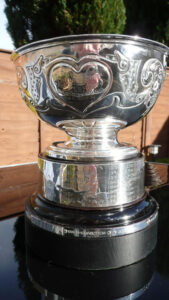
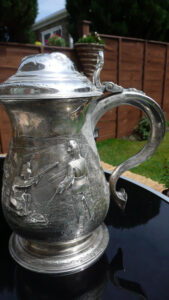
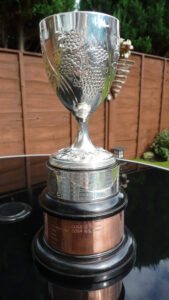



Two other Silver Challenge Cups were given to the Club, one by Mr. H. H. Wake C. E., a handsome cup on a plinth made from a piece of very old oak dredged up from the bed of the river Wear. The other, known as the “Waller Challenge Cup”, was presented to the Club by a member of that name. All these cups are still in the possession of the Club, and competed for regularly.
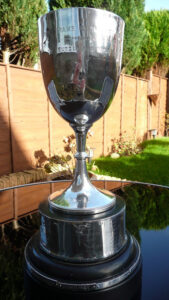
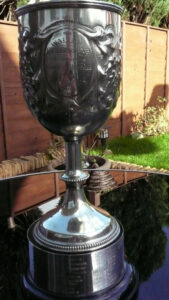
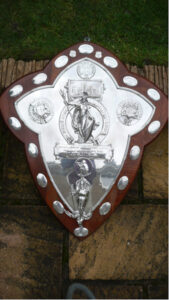



A very important fillip to the shooting activities of the district was made by the presentation of a very handsome Challenge Shield by the 7th Marquis of Londonderry and the 3rd Earl of Durham in August 1905, to be competed for annually by the Clubs of the district. It was shot for annually at Wynyard Park, the north country seat of the Marquis, and Lambton Park, Lambton Castle, the seat of the Earl of Durham, alternately when a large number of Clubs from the county competed and the teams were hospitably entertained by these Noblemen.
Sunderland Rifle Club won the Trophy three years running from 1933. This trophy is currently held in our clubhouse and was restored and cleaned a number of years ago by the club Secretary.